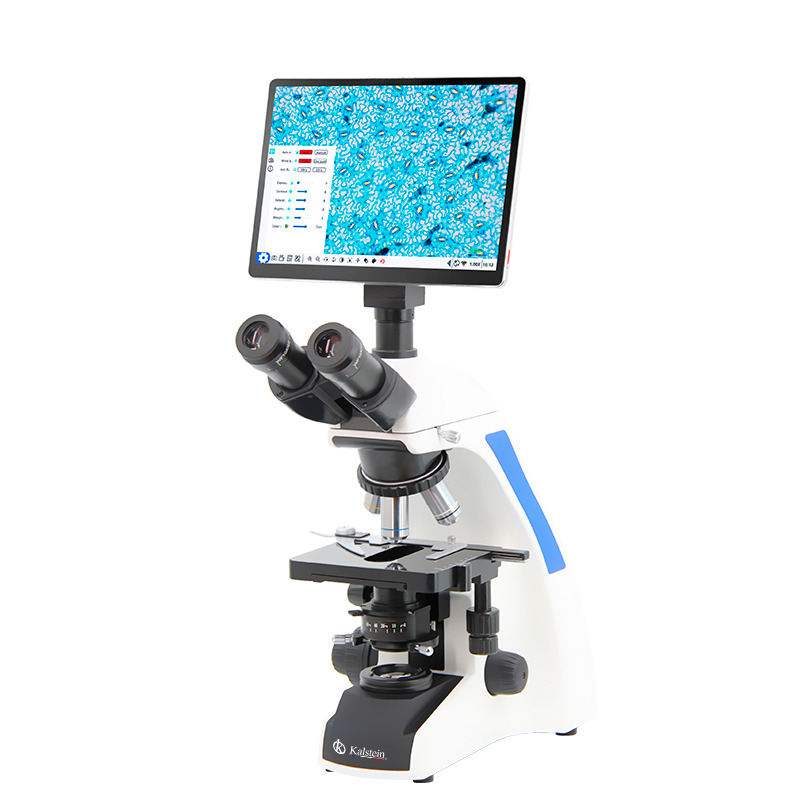In recent years, innovations in laboratory equipment have made substantial strides. These developments range from automation of processes to integration of artificial intelligence (AI). In particular, automation is an undeniable trend in the realm of clinical and diagnostic laboratories. Laboratory equipment is becoming increasingly automated, offering healthcare professionals unprecedented efficiency.
Besides improving efficiency, automation also helps to increase result accuracy and reduce human errors. Microscopes are in line with this trend, incorporating automated systems that allow for much more precise and efficient sample analysis. Machines like automatic scanning microscopes bear testament to how these innovations are transforming the landscape of labs worldwide.
If you’re seeking a blend of innovation and quality, you’ve come to the right place. At https://kalstein.co.in/category-product/laboratory-line/microscopes/ we offer you the luxury to explore our exclusive catalog of laboratory equipment. We manufacture each piece of equipment with a level of excellence. Our intuitive and agile online shopping channels are designed for your convenience, ensuring the friendliest prices. Don’t hesitate any longer, we bring science to life, it’s time to become part of our community. https://kalstein.co.in/
Noteworthy Changes: From Optical Microscopy to Digital Microscopy
From the development of optical microscopy centuries ago, microscopes have undergone continuous technological advancements. The introduction of digital microscopy, however, has been one of the most significant changes to date. These types of microscopes, being capable of digitally capturing and analyzing images, are fully aligned with the continuously rising digital trend in the healthcare sector.
Digital microscopes also easily integrate with automated systems, furthering their efficiency and accuracy. With digitalization, professionals can instantaneously save and share captured images, facilitating collaboration and remote diagnosis. As a result, many labs are adapting to these significant changes, transitioning from optical to digital microscopy.
Artificial Intelligence (AI) and Its Integration into Laboratory Equipment
Another emerging trend is the integration of artificial intelligence into lab equipment. AI is being used to examine, comprehend, and in some cases, even make decisions based on the data gathered by these tools. Microscopes are no exception to this trend, with more and more models incorporating AI capabilities.
With AI, microscopes can scrutinize images more accurately and speedily than humans. AI algorithms can identify patterns and uncommon details that might go unnoticed to the human eye. Moreover, this can greatly fasten the diagnosis process, which can be crucial in many medical cases.
Developments in Medical Devices: Portable Microscopes
Developments in medical devices aren’t confined just to improvements in functionality or precision, but also encompass portability. Innovation and convenience form the perfect blend for effective device development. Nowadays, portable microscopes have gained popularity due to their versatility and ease-of-use.
Portable microscopes allow healthcare professionals to perform on-site inspections, which can be beneficial in remote areas without access to a full lab. These compact devices are also valuable in field studies, where they are instrumental for real-time sample analysis.
Continued Evolution: 3D Microscopes and Augmented Reality (AR)
Beyond automation, digitalization, and artificial intelligence, technological evolution has paved the way for 3D microscopes and augmented reality (AR). These advancements allow researchers to visualize samples on a three-dimensional scale, offering an exceptional level of detail and depth.
3D microscopes, combined with augmented reality, can create interactive visual experiences, providing researchers with an innovative method of studying samples. These advancements are redefining how health professionals and scientists use microscopes, once again underscoring the critical role they play in labs.
Towards the Future: Smart Labs
Finally, the trend of “smart labs” is another area where microscopes play a pivotal role. Smart functions encompass all the aspects discussed above, with most labs expected to move in this direction in the future.
In smart labs, automation, digitalization, AI, and other technologies allow for a more streamlined and effective workflow. As microscopes conform to and embrace these changes, we are witnessing a genuine revolution in microscopic science. Without a doubt, microscopes will continue to hold a central place in labs, keeping pace with the current and future trends.
Conclusion
Trends in the laboratory sector are exciting and loaded with possibilities. Microscopes are a critical component in the realization of these possibilities and will continue to play a key role in mapping the future direction of labs. As we progress and evolve, it will be interesting to see how this fundamental tool grows and develops in our relentless pursuit of knowledge.


